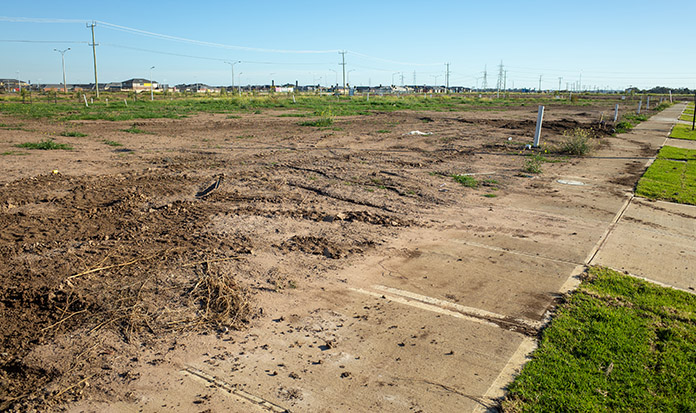Over two million women living in the US have been diagnosed with and treated for breast cancer. Yet focusing on the scary side of the disease won’t motivate us to make the changes that can save our lives: healthy eating, exercising, and preventive care.
SPOTTING CANCER SOONER
Simple but accurate blood tests may soon make it possible to detect cancer while it can still be treated.
The individual fates of the 1.3 million Americans diagnosed with cancer this year will be largely decided by one simple factor: at what stage was the disease spotted?
Ovarian cancer offers a fearsome example. Because of its vague symptoms, it is usually ignored or misdiagnosed, sometimes for years. Eighty percent of patients don’t find out they have it until it’s spread beyond the ovaries. At that point, it is usually incurable; only one patient in three survives five years after diagnosis. On the other hand, surgery can cure 90 percent of patients whose cancer is detected while still confined to the ovary. Even notoriously lethal cancers of the lung and pancreas are anything but a death sentence, if caught early enough. “Cancers can almost always be cured by simple, classical surgical techniques, if they’re detected early,” says Bert Vogelstein, a molecular geneticist at the Howard Hughes Medical Institute at Johns Hopkins.
The problem, of course, is that cancers, which begin with just a few deviant cells, are by their very nature hard to diagnose early. In the last few years, though, a new method has emerged that promises to deliver simple blood tests that identify the telltale molecular profiles of various cancers easily and accurately. It has long been known that cancer leaves traces in the blood, but these hints are confusing and ambiguous. “Blood is perfusing through every tissue in your body, 60 times a second, beating through it,” says National Institutes of Health pathologist Lance Liotta. “You’d imagine there’d be fragments of what’s going on in every cell, and every tissue, ending up in the circulation.”
Indeed medical researches have struggled for years to create blood tests that would detect particular proteins produced by cancer cells. But the few such protein “markers” discovered to date haven’t proved very useful for early detection, since none of them is produced solely by cancer cells. The new method, by contrast, mines the blood for patterns of proteins; these patterns should, in theory, identify a cancer with the clarity and uniqueness of a human fingerprint. And such patterns can be detected long before symptoms of disease appear.
Corporate, academic, and government researchers are racing to develop reliable screening tests based on these protein patterns. The first such test, for ovarian cancer, is already being evaluated in patients. It could be available within a few years, to be followed by tests for prostate, lung, breast, renal, and pancreatic cancer, as well as leukemia and lymphoma. In the long term, a single drop of blood may be all that’s needed to screen every major cancer.
ARE YOU AT RISK?
Other than skin cancer, breast cancer is the most common type of cancer in the United States. More than 180,000 women are diagnosed with breast cancer each year and about 40,600 will die from the disease.
WHO’S AT RISK?
The exact causes of breast cancer are not known. However, studies show that the risk of breast cancer increases as a woman gets older. The disease is very uncommon in woman under the age of 35. Most breast cancers occur in women over the age of 50, and the risk is especially high for women over age 60. Also, breast cancer occurs more often in white women than African-American or Asian women.
Research has shown that the following conditions increase a woman’s chance of getting breast cancer:
PERSONAL HISTORY of breast cancer. Women who have had breast cancer face an increased risk of getting breast cancer in their other breast.
FAMILY HISTORY. A woman’s risk for developing breast cancer increases if her mother, sister, or daughter had breast cancer, especially at a young age.
CERTAIN BREAST CHANGES. Having a diagnosis of atypical hyperplasia or obular carcinoma in situ (LCIS) may increase a woman’s risk for developing cancer.
GENETIC ALTERATIONS. Changes in certain genes (BRCA1, BRCA2, and others) increase the risk of breast cancer. In families in which many women have had the disease, gene testing can sometimes show the presence of specific genetic changes that increase the risk of breast cancer. Doctors may suggest ways to try to delay or prevent breast cancer, or to improve the detection of this disease in women who have these changes in their genes.
Other factors associated with an increased risk for breast cancer include:
ESTROGEN. Evidence suggests that the longer a woman is exposed to estrogen (estrogen made by the body, taken as a drug, or delivered by a patch), the more likely she is to develop breast cancer. For example, the risk is somewhat increased among women who began menstruation at an early age (before age 12), experienced menopause late (after age 55), never had children, or took hormone replacement therapy for long periods of time. Each of these factors increases the amount of time a woman’s body is exposed to estrogen. DES (diethylstilbestrol) is a synthetic form of estrogen that was used between the early 1940s and 1971. Women who took DES during pregnancy to prevent certain complications are at a slightly higher risk for breast cancer. This does not appear to be the case for their daughters who were exposed to DES before birth. However, more studies are needed as these daughters enter the age range when breast cancer is more common.
LATE CHILDBEARING. Women who have their first child late (after about age 30) have a greater chance of developing breast cancer than women who have a child at a younger age.
BREAST DENSITY. Breasts that have a high proportion of lobular and ductal tissue appear dense on mammograms. Breast cancers nearly always develop in lobular or ductal tissue (not fatty tissue). That’s why cancer is more likely to occur in breasts that have a lot of lobular and ductal tissue (that is, dense tissue) than in breasts with a lot of fatty tissue. In addition, when breasts are dense, it is more difficult for doctors to see abnormal areas on a mammogram.
RADIATION THERAPY. Women whose breasts were exposed to radiation during radiation therapy before age 30, especially those who were treated with radiation for Hodgkin’s disease, are at an increased risk for developing breast cancer. Studies show that the younger a woman was when she received her treatment, the higher her risk for developing breast cancer later in life.
WEIGHT. Weight gain after age 18 is associated with an increased risk of post- menopausal breast cancer.
PHYSICAL INACTIVITY. Indirect evidence exists indicating that there is an inverse relationship between amount of physical activity levels and one’s risk of breast cancer. The NCI reports that 2/3 of research demonstrates an inverse relationship of physical activity to breast cancer. The decrease risk is approximately 30% on average. At least four hours of moderate exercise per week has been shown to decrease breast cancer risk in premenopausal women by as much as 50 percent (“Physical Activity and Risk of Breast Cancer,” New England Journal of Medicine, May 1, 1997).
ALCOHOL CONSUMPTION. Some studies suggest a slightly higher risk of breast cancer among women who drink alcohol. The relationship between alcohol and breast cancer is consistent among associations of dietary factors and breast cancer risks, and is likely related to alcohol’s (beer, wine, and liquor) ability to increase estrogen levels. Most doctors recommend no more than seven alcoholic beverages per week for women.















